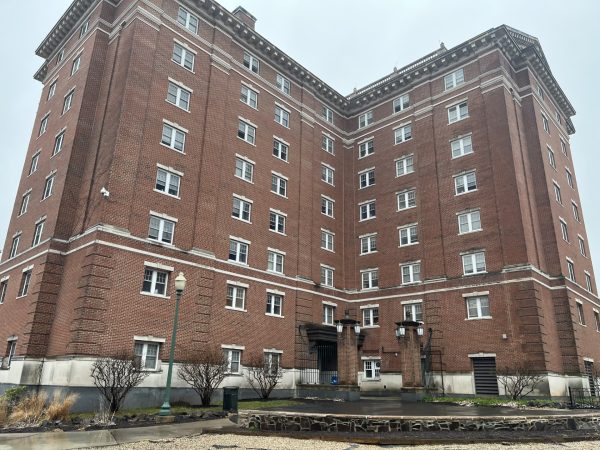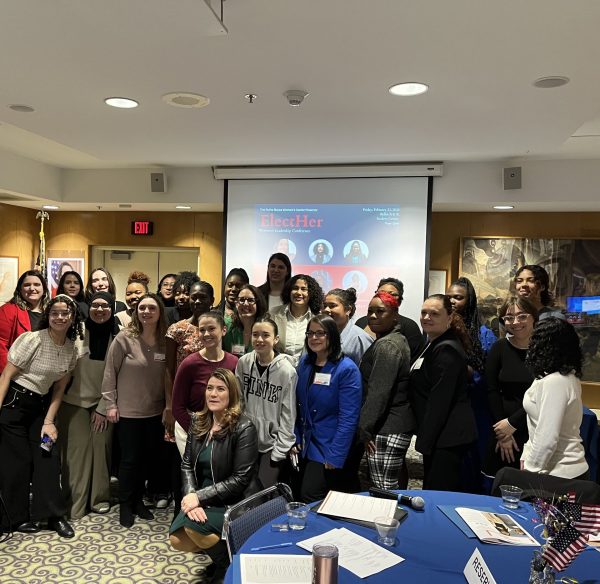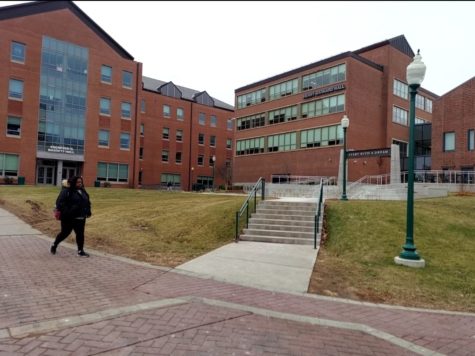Tuition On The Rise
November 7, 2018
Last spring, the Board of Regents for Higher Education passed the Connecticut State College and Universities’ (CSCU) President Mark Ojakian’s proposal to raise in-state students’ tuition by four percent.
There are many factors contributing to the rise in tuition like administrative bloat, state funding cuts and the rising cost of providing education.
With this latest increase, the cost of higher education at public state universities and colleges has more than doubled, with tuition having increased every single year since 2002. However, over that time, there have been multiple budget cuts to the CSCU system, with scores of faculty positions removed, replaced by adjuncts or simply left vacant. Ojakian even announced a hiring freeze for all 17 campuses and the system office.
“Many of us haven’t gotten a raise for some time. I think at least we’re looking at three or four years or more that we’re stagnant,” Professor of Education and New Britain Common Council member Aram Ayalon said. “[Professors] are not being replaced. We offer less sections and larger class sizes. So, we can give less personal attention to our students.”
In addition to the cuts, fewer students are deciding to pursue careers in education, which has faculty in the department worried.
“Just the morale of the faculty [is getting worse] as we see lower and lower enrollment, especially in education,” Ayalon said. “People are very discouraged at the current situation.”
Though the tuition increase affects all students, it affects some more than others. Junior Cynthia Mena said that paying tuition is already difficult for her and that increases make it even harder.
“It’s going to make it even more of a hassle,” Mena said.
Other students like junior Kat Share won’t be as affected. Nonetheless, she is concerned about where that money will go and the university’s lack of transparency.
“It won’t really affect me too much in regards to what is actually coming out of my pocket,” Share said. “But it affects me in sort of a psychological sense because I would really like to know where my money is already going now and where this extra money is going once tuition is increased.”
In an open letter to the students and families of the CSCU system, Ojakian explained that tuition increases occur every year “to address the growing costs of programs and services.” It doesn’t help that while the cost of providing those programs and services continues to rise, the funding state colleges and universities receive from the state continues to decrease.
Some of the other factors for the rising cost of education, according to Central Connecticut President Dr. Zulma Toro, are the costs of providing the latest technology to the students, the cost of fringe benefits for the faculty of the institutions and the cost of regulations and compliance for the institutions. Also, facility improvements like the $54 million renovation project of Willard and DiLoreto Halls are expensive.
One of Dr. Toro’s goals is to increase enrollment numbers by implementing new marketing strategies, increase private donations and by building strong relationships with K through 12 systems to “build a pipeline of college-ready students who come to Central.” It is also one of her goals to keep the cost of tuition in check.
“By diversifying the sources of funding, plus cost containment I hope, and it’s my goal, to contain the tuition cost,” Dr. Toro said.
One of those programs currently being funded by the state is university athletics. The budget for athletics rose steadily from 2007 to 2015 even as tuition was increasing. In 2015, CCSU spent over $13 million in school funds on athletics programs. Also, coaches for CCSU’s sports teams are among the university’s highest paid employees. Basketball coach Donyell Marshall and football coach Pete Rossomando are both in the top six on CCSU’s payroll, with each of them pulling in well over $150,000 a year. Former Athletics Director Paul Schlickmann is the university’s second-highest paid employee behind Dr. Toro.
“That is overwhelmingly surprising,” Mena said on the figures. “That is crazy.”
Some see value in what university athletics provides for CCSU. Dr. Cohen, who played Division 1 sports at the University of Connecticut, said that athletics bring energy and life to the campus, especially for the students who reside here.
“I believe that sports does play a critical role in developing spirit towards our community,” she said.
While advocates of college sports preach community and pride, the students don’t feel as though the athletics teams contribute to their college experience.
“It only gives a sense of community to people directly involved. For everyone else I think sports can do the opposite,” Share said.
Mena and junior Moryam Badiru both said they don’t take pride in CCSU’s sports teams and don’t attend the games.
Dr. Toro said last year that she was anticipating a significant budget cut for athletics this year, even after CCSU cut both the men’s and women’s golf teams in an effort to trim athletics spending.
“We will be looking closely at every dime the institution is investing,” Dr. Toro said. “If the conclusion is that we as an institution need to reduce the number of sports, then we will have to do that.”













